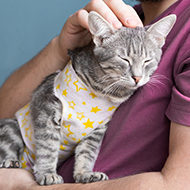Benefits of polyandry in female prairie dogs
New research has revealed that by mating with multiple partners, female prairie dogs are more likely to conceive but survive for less long.
The practice, which is known as polyandry, is also thought to allow females to obtain more viable, compatible and genetically diverse sperm.
The study, led by John Hoogland and a team of student assistants, took place over 35 years. It involved trapping, tagging and observing four species of wild prairie dogs living in national parks and wildlife refugees in the United States.
It was carried out to reveal why female prairie dogs partake in polyandry, despite receiving sufficient sperm from one partner to fertilise all of their eggs.
Of the four species, which were all found to commonly engage in polyandry, three species raised more yearlings as a result.
However, mothers in two of the three species that raised more young were found to be less likely to survive until the next reproductive season.
"By observing from dawn to dusk for the entire reproductive season of each year, research assistants and I documented 2,504 copulations by 1,426 females," said Hoogland.
"After the first copulation, most females clearly searched for additional sexually mature males with which they had not yet copulated."
Hoogland added that polyandrous females were significantly less likely than monandrous females to survive until the next mating season due to a number of reasons, including increased susceptibility to predators while searching for additional males to copulate with.
The study has been published in the Journal of Mammalogy.



 RCVS Knowledge has called on vet practices to audit their post-operative neutering outcomes.
RCVS Knowledge has called on vet practices to audit their post-operative neutering outcomes.